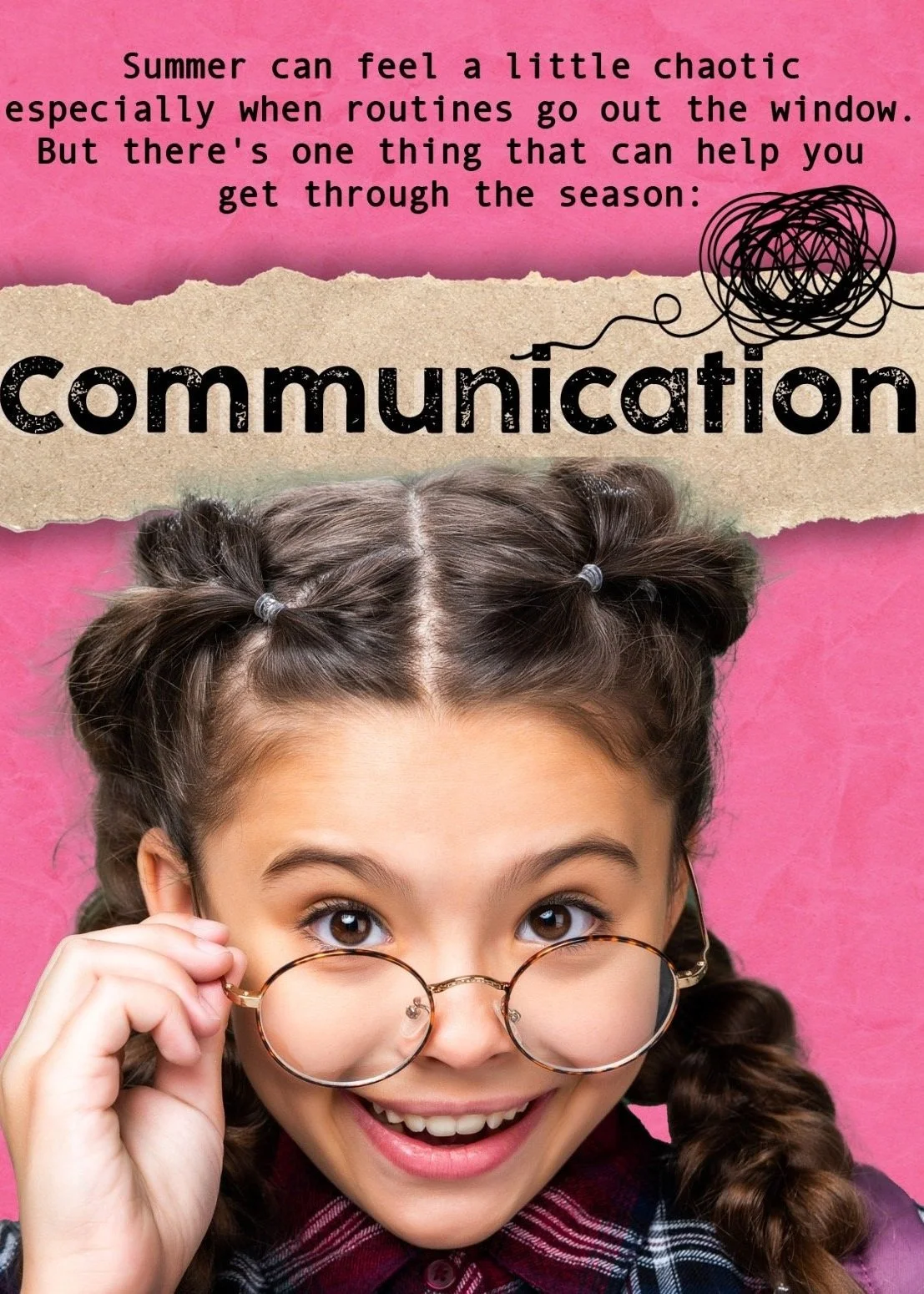Summer Break… But With a Plan
Summer can be a wonderful time to slow down, explore, and enjoy your family. But let’s be honest—when routines go out the window, things can also get a little chaotic.
One thing that can make all the difference?
💬 Communication.
Whether it's talking with your child or coordinating with their caregivers, open and consistent communication helps everyone feel more prepared and connected.
Here are a few practical tips to help your family navigate summer with more ease:
1. Create a Simple (and Flexible) Schedule
Kids often feel safer when they know what to expect.
A predictable rhythm—like breakfast, playtime, lunch, rest—can bring structure without being too rigid. It’s okay if the plan changes! The goal is to offer a sense of consistency.
2. Use Visual Supports
Visual tools can help your child understand and anticipate what’s coming.
Try using:
A weekly calendar with pictures
Notes like “No school today”
Photos of people or places you’ll visit
These supports can reduce anxiety and make transitions smoother.
3. Give a Heads-Up
Even if your child doesn’t respond or speak back, letting them know what’s coming is valuable.
Talking to them helps build understanding—and connection.
Remember: kids often understand more than they express.
4. Observe and Adjust
What works for one child may not work for another.
Notice their preferences:
Do they enjoy being out or prefer staying home?
Are they sensitive to noise or bright lights?
Do they need movement or quiet time?
Communication isn’t just what you say—it’s also about what you notice.
5. If Someone Else Is Watching Your Child…
Make sure to share what they need to know:
How your child communicates
Allergies or medical needs
What calms or upsets them
Emergency contact info and steps to take
👉 We’ve created a FREE printable PDF you can fill out and share with babysitters, grandparents, or summer school staff.
You can download it directly from our online store—it’s completely free!
There’s no such thing as a perfect summer.
But there are summers filled with good communication.
And when we communicate, there’s less chaos—and more connection.

